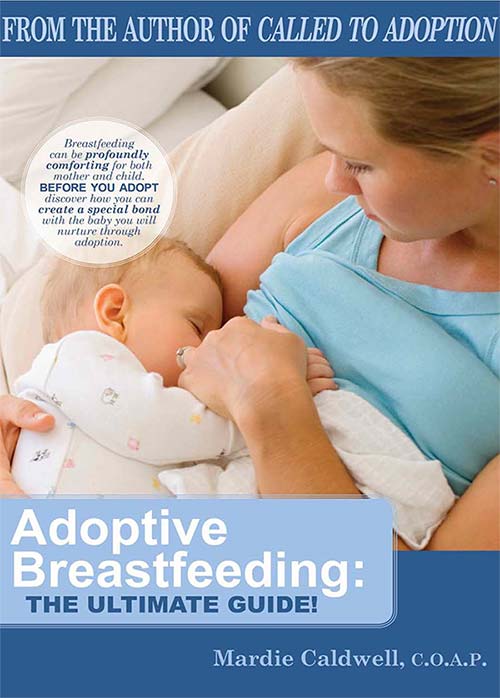Guide to Adoptive Breastfeeding Kit

As a new mother, the opportunity to breastfeed as an adoptive mother was important to Caldwell, especially after the loss of seven pregnancies. She spoke to lactation consultants and did research on inducing lactation. She tried recommended procedures as well as those that were handed down from generation to generation in order to discover what worked for her.
Even when lactation in the form of actually producing milk may not be possible, Caldwell shares systems created so that any mother can experience the bond that comes with nursing a baby.
Breastfeeding allows the adoptive mother and her baby to increase physical contact through skin-to-skin contact. Skin-to-skin connection is vital to form an attachment between mother and baby. Skin-to-skin contact alos provides many benefits for baby, including a more regulated heart rhythm, increased reflex organization, and a more stable body temperature. Also, hormones that are released while nursing facilitate the bonding process.
Research has demonstrated that breastfeeding helps with positive psychological benefits for adoptive mothers too. One study looked at mothers’ moods when they breastfed and found that the mothers had increased positive moods immediately following nursing their babies. This is due to the higher levels of oxytocin released by nursing which causes a boost to the mothers’ attitude.
It’s important to understand that breastfeeding isn’t just for biological mothers after pregnancy. Adoption and breastfeeding can be achieved. With preparation, patience, and support, adoptive mothers can nurse and experience a different kind of closeness with their baby!
Available as both a physical kit as well as a downloadable kit, this information is valuable and reassuring as adoptive mothers look to experience this unique part of being a mother.

